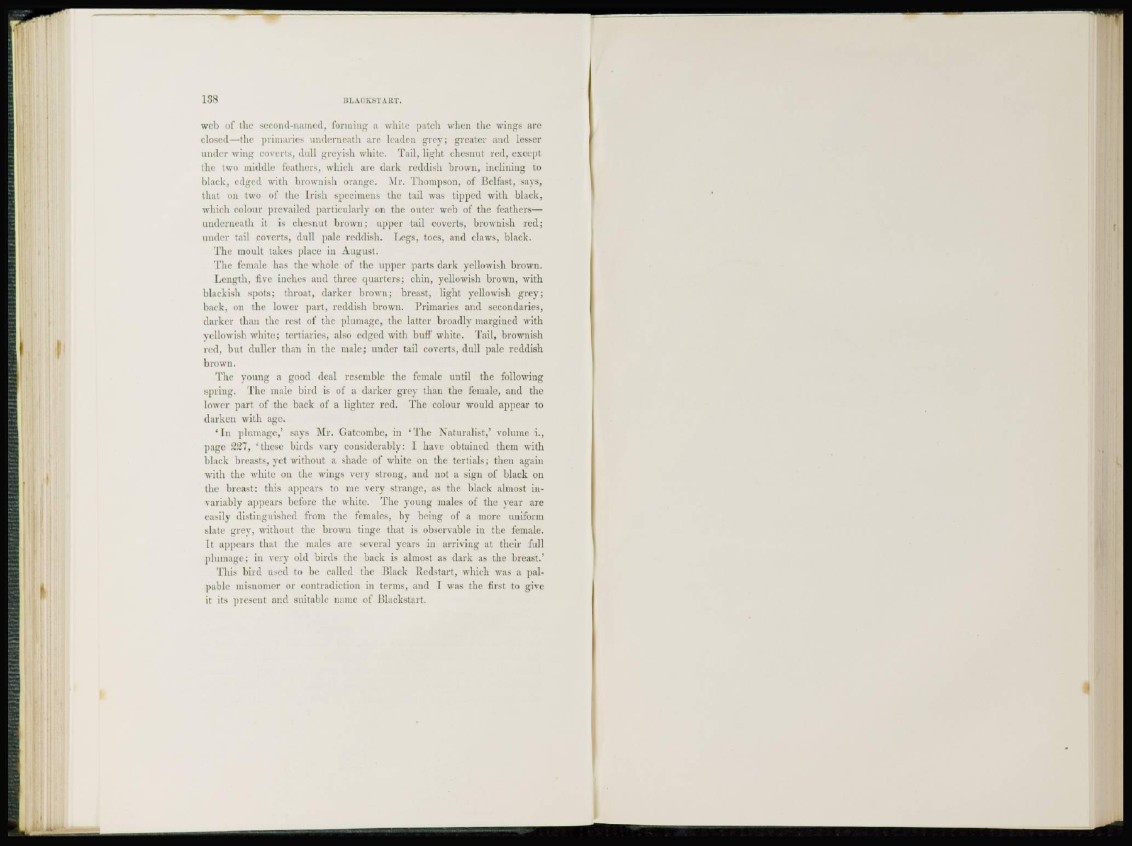
1S8 BLAC KM'A KT.
web of the second-named, forming a white patch when the wings are
closed—the primaries underneath are leaden grey; greater and lesser
under wing coverts, dull greyish white. Tail, light chesnut red, except
the two middle feathers, which are dark reddish brown, inclining to
black, edged with brownish orange. Mr. 'Thompson, of Belfast, says,
that on two of the Irish specimens the tail was tipped with black,
which colour prevailed particularly on the outer web of the feathers—
underneath it is chesnut brown; upper tail coverts, brownish red;
under tail coverts, dull pale reddish. Legs, toes, and claws, black.
The moult takes place in August.
The female has the whole of the upper parts dark yellowish brown.
Length, live inches and three quarters; chin, yellowish brown, with
blackish spots; throat, darker brown; breast, light yellowish grey;
back, on the lower part, reddish brown. Primaries and secondaries,
darker than the rest of the plumage, the latter broadly margined with
yellowish white: tertiaries, also edged with buff white. Tail, brownish
red, but duller than in the male; under tail coverts, dull pale reddish
brown.
The young a good deal resemble the female until the following
spring. The male bird is of a darker grey than the female, and the
lower part of the back of a lighter red. The colour would appear to
darken with age.
' I n plumage,' says Mr. Gatcombe, in ' T h e Naturalist,' volume i.,
page 227, 'these birds vary considerably: I have obtained them with
black breasts, yet without a shade of white on the tertials; then again
with the white on the wings very strong, and not a sign of black on
the breast: this appears to me very strange, as the black almost invariably
appears before the white. The young males of the year are
easily distinguished from the females, by being of a more uniform
slate grey, without the brown tinge that is observable in the female.
I t appears that the males are several years in arriving at their full
plumage; in very old birds the back is almost as dark as the breast.'
This bird used to be called the Black Redstart, which was a palpable
misnomer or contradiction in terms, and I was the first to give
it its present and. suitable name of Blackstart.